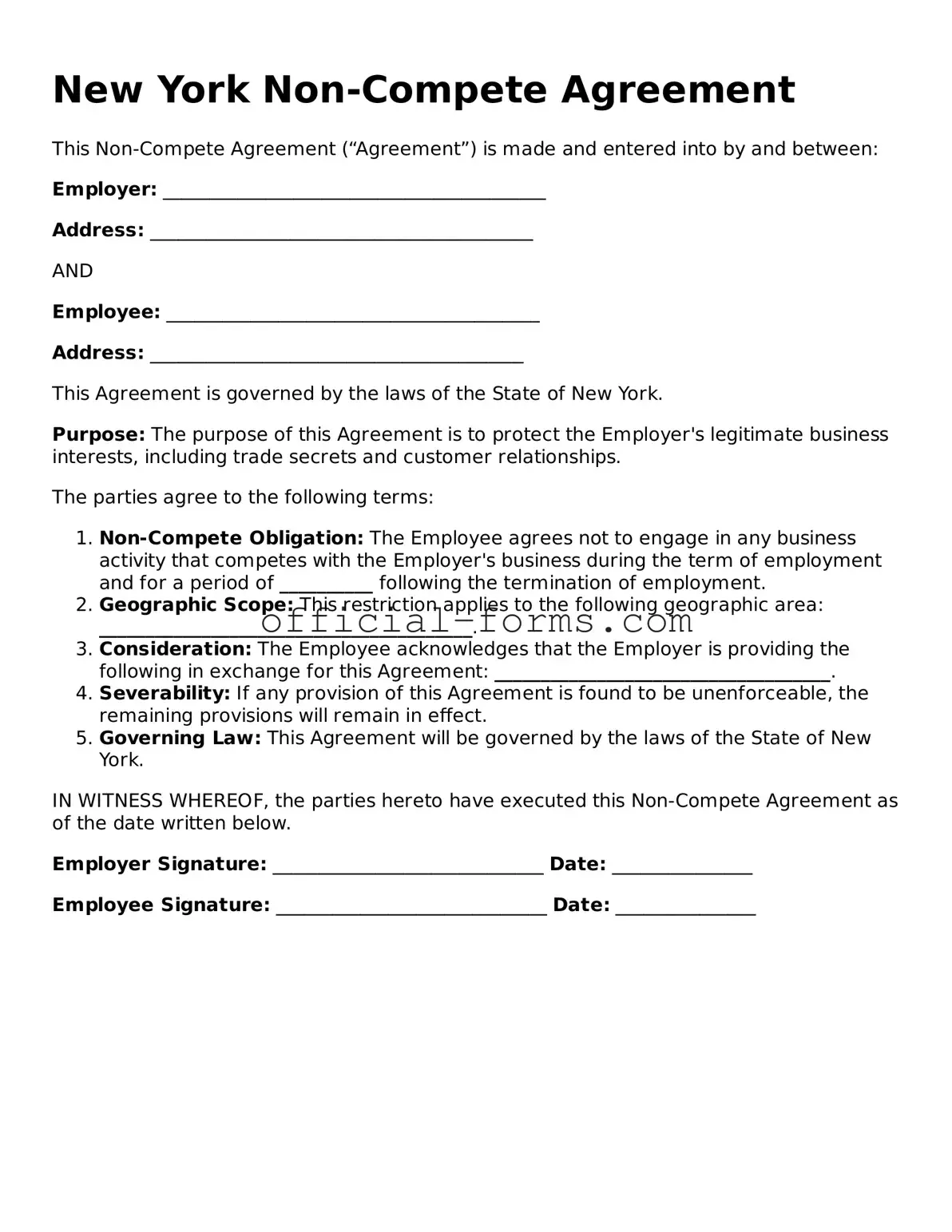Filling out a New York Non-compete Agreement form can be a straightforward process, but many individuals make common mistakes that can lead to complications later on. One prevalent error is failing to clearly define the scope of the non-compete clause. Without a precise description of the activities restricted, the agreement may be deemed unenforceable.
Another mistake is neglecting to specify the duration of the non-compete period. A vague timeframe can create confusion and may not hold up in court. It is essential to establish a reasonable time limit that reflects industry standards.
Many people also overlook the geographic limitations of the agreement. A non-compete that restricts a person from working in an overly broad area may be challenged. Clearly defining the geographic scope helps to ensure the agreement is fair and enforceable.
Inadequate consideration is another common pitfall. A non-compete agreement must provide something of value in exchange for the restrictions placed on the employee. Failing to include this can render the agreement invalid.
Some individuals mistakenly assume that verbal agreements are sufficient. A signed written agreement is crucial for enforceability. Relying on informal discussions can lead to misunderstandings and disputes down the line.
Additionally, people often forget to review the entire agreement before signing. Skimming through the document can lead to missing critical clauses or terms that could have significant implications.
Another frequent error is not consulting with a legal expert before finalizing the agreement. Legal nuances can vary, and professional guidance can help ensure that the document meets all necessary legal standards.
Many fail to consider how the non-compete may impact their future employment opportunities. Understanding the potential long-term consequences is vital before agreeing to such restrictions.
Some individuals may also neglect to address the issue of confidentiality within the agreement. A comprehensive non-compete should include provisions that protect sensitive information, which is often just as important as the non-compete terms.
Finally, a lack of clarity in the language used can lead to misunderstandings. Using simple, straightforward language helps all parties understand their rights and obligations, reducing the likelihood of disputes in the future.
